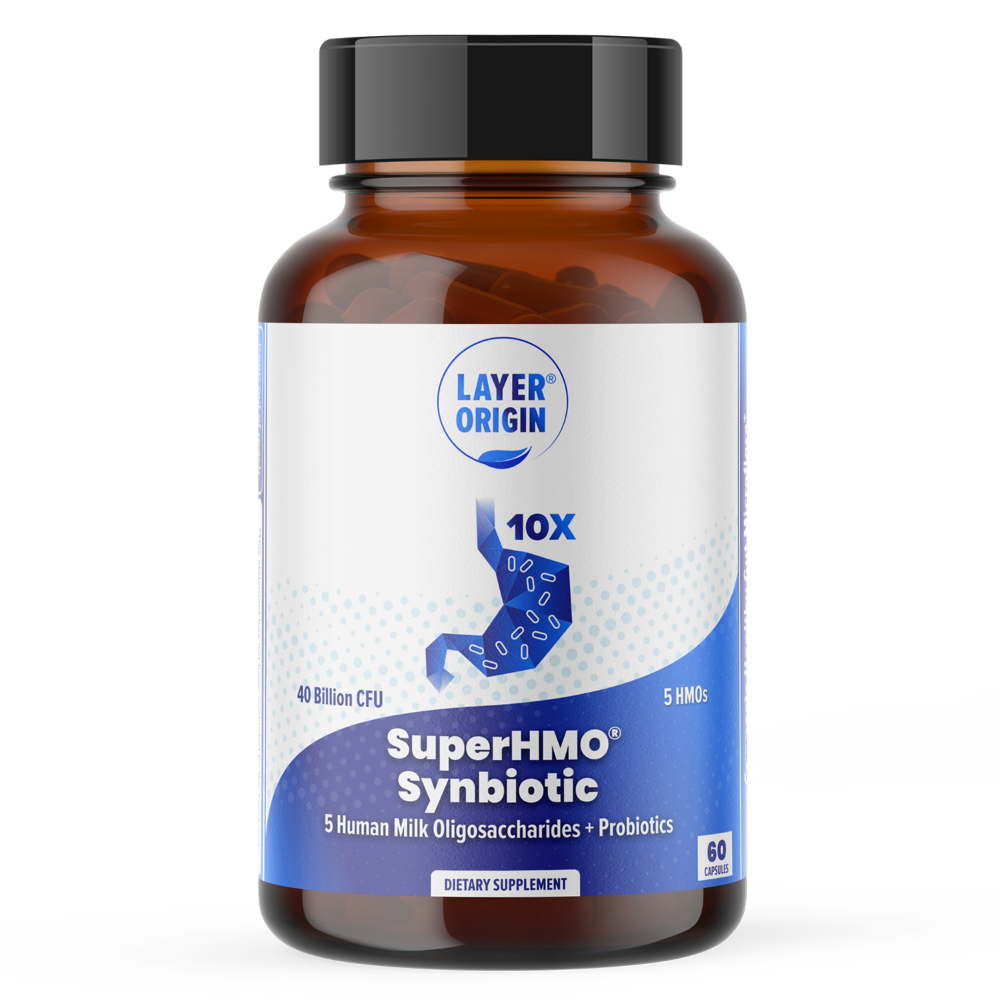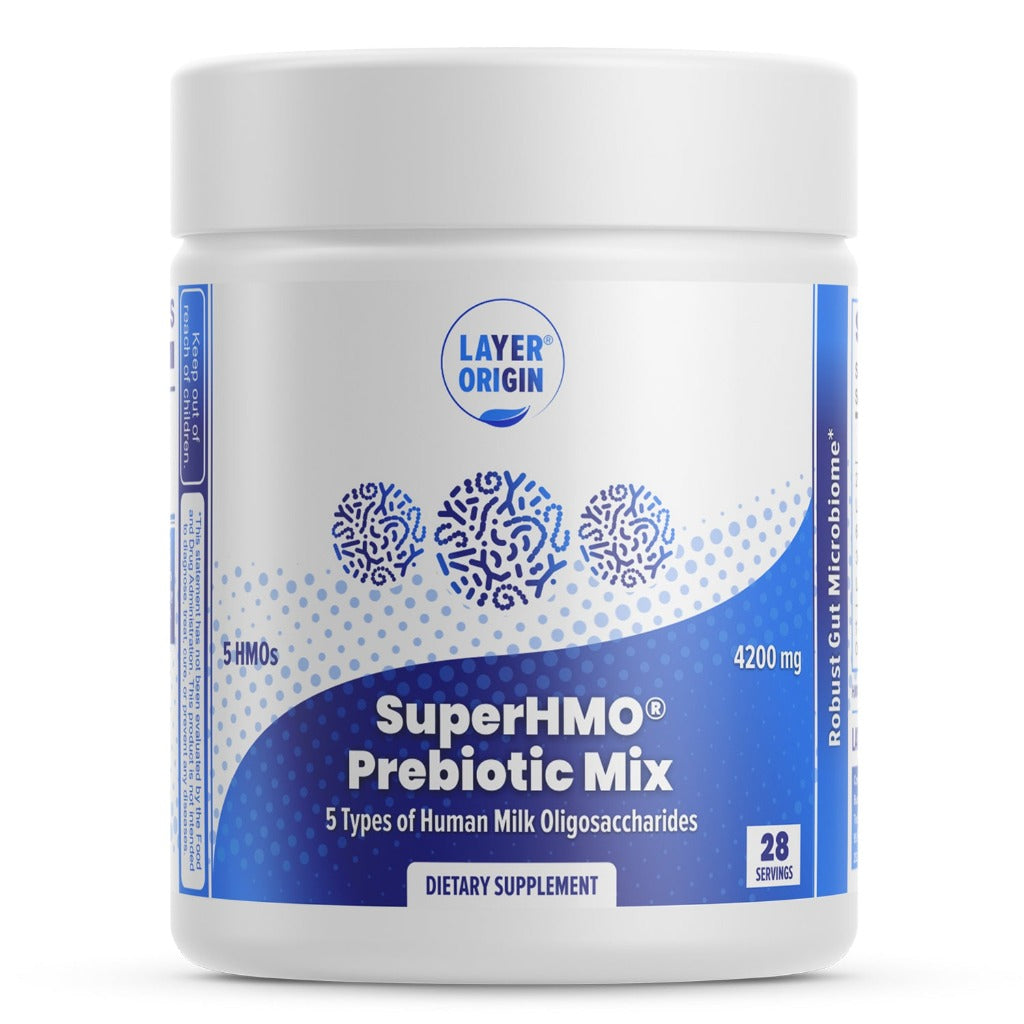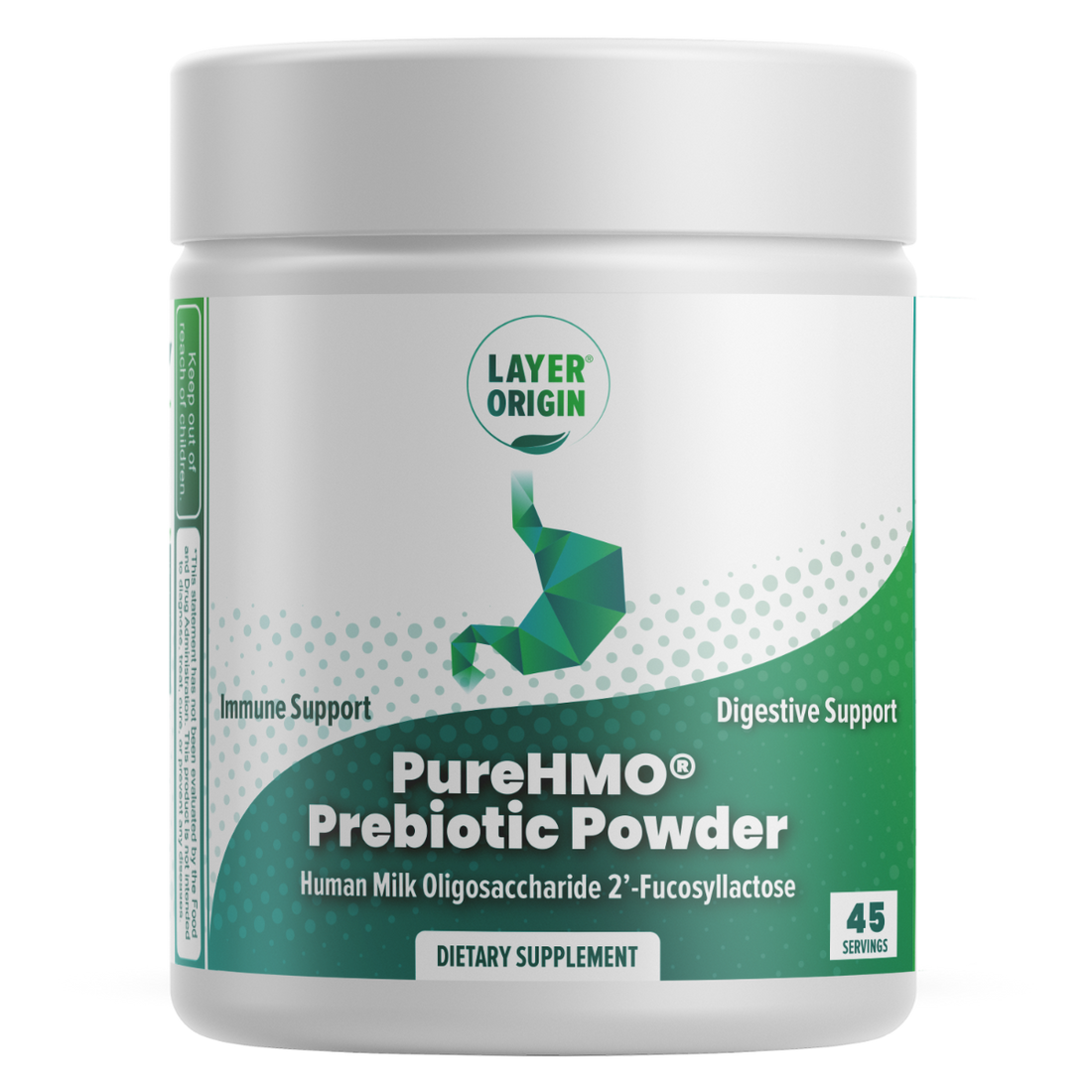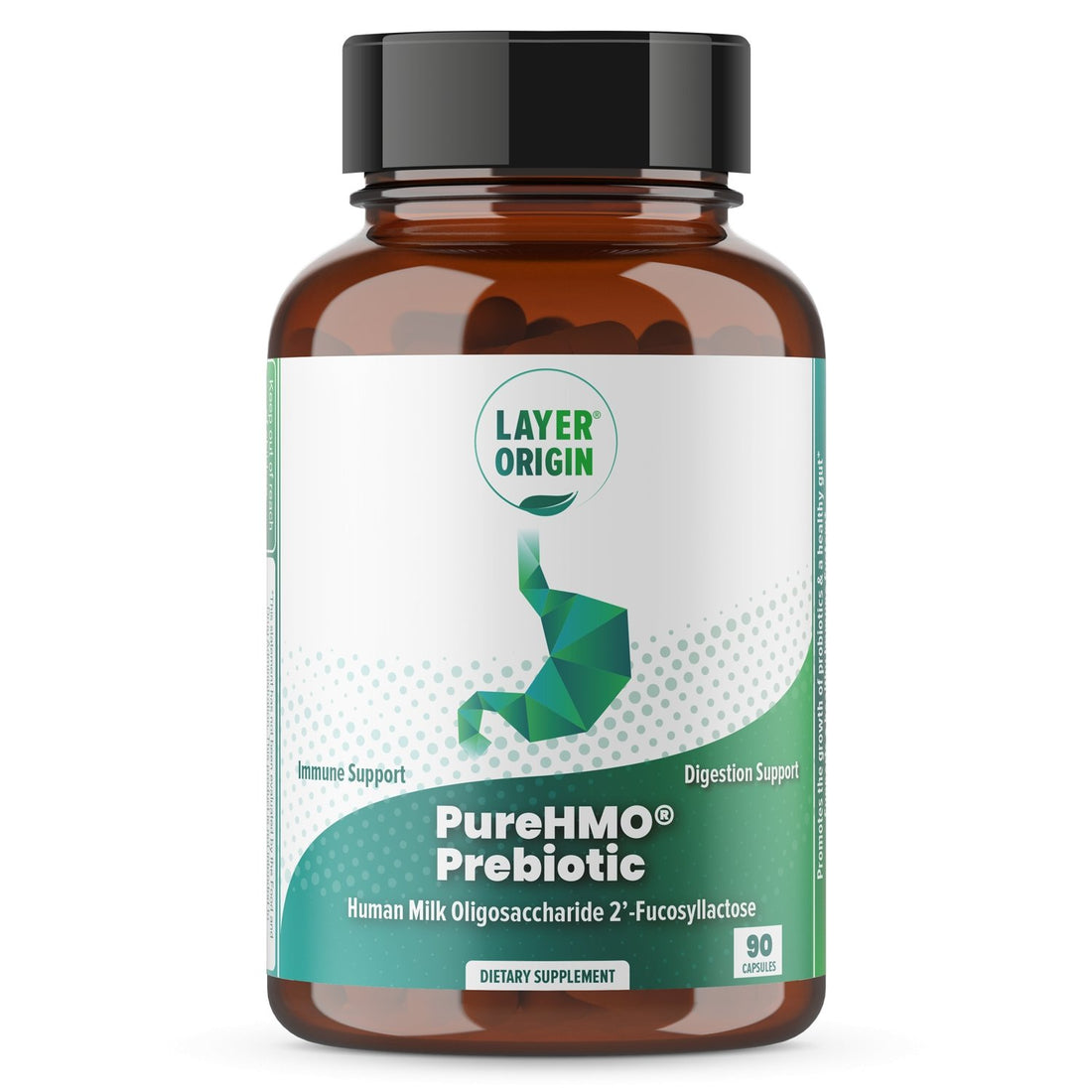Get ready to explore how a unique sugar molecule found in human milk could enhance muscular endurance, strength, and even support recovery. This article delves into the science behind 6’SL and what it could mean for muscle health.
Content Outline
- Introduction: What is 6’-Sialyllactose (6’SL)?
- What makes 6’SL unique?
- From bench to biceps: What the science says
- Summary: Benefits of 6’SL for muscle health
Introduction: What is 6’-Sialyllactose (6’SL)?
In a world where there is huge focus on fitness, health, and longevity, nutrition science is uncovering powerful new players in the supplement space. One naturally produced compound that’s gaining traction is 6-sialyllactose or 6’SL for short, a type of human milk oligosaccharide (HMO), that may offer remarkable benefits for muscle endurance, strength, and recovery.
Originally known for its function in infant nutrition, alongside another sialylated HMO, 3’ sialyllactose (3’SL), 3’SL and 6’SL have been identified as important components for brain health and cognitive development. They have even been added to some infant formulas and are available as supplements for brain performance. However, 6’SL is now under the scientific spotlight for its potential to support adult muscle health, but what exactly is it, and how can a sugar molecule isolated from human breast milk enhance physical performance?
Let’s explore what the latest research says and why 6’SL could be the next breakthrough in performance and muscle health nutrition.
Human milk oligosaccharides (HMOs) at a glance
HMOs are complex carbohydrates that are naturally present in human breast milk and are a vital source of nutrition for infant development. Although they do not actually nourish the infant themselves, they serve as a food source for beneficial gut bacteria, influencing the development of their immune system and general health1.
Figure 1. Different types of common HMOs found in human breast milk2.
More than 200 HMOs have been identified to date and their concentrations are dependent on various factors including the mother’s genetic secretor status, lactation period, and length of pregnancy3. However, HMOs have also been noted for their benefits in adult health, including their ability to modulate the immune system, strengthen the gut barrier, and keep the gut microbiome in balance4. Hence the rise in HMO supplements available to adults who are conscious about keeping the health of their gut microbiota in check.
What makes 6’SL unique?
Not all HMOs are the same. What sets 6’SL apart is its unique chemical structure and the presence of sialic acid, a diverse family of sugar units that have important structural and modulatory roles5.
The structure and presence of sialic acid gives 6’SL properties that extend beyond the traditional benefits of prebiotics, offering potential benefits in neuromuscular health, inflammation regulation, and cellular energy production.
Structure and biological activity
6’SL belongs to a group called sialylated HMOs, which means they contain sialic acid, an important sugar required for cell communication and neuroprotection. Its structure includes a lactose backbone with a sialic acid group attached to it. This sialylation influences how 6’SL interacts with the gut microbiome, immune system, and muscle tissues.
Figure 2. The structure 6’SL. It is defined by N-acetyl-d-neuraminic acid and d-galactose are attached at 2-6. This binding site sets it apart from 3’SL where it is attached at 2-3 instead6.
Sialic acid and neuromuscular function
Sialic acid has a crucial role in nerve conduction and synaptic plasticity7. This means that 6’SL can contribute to faster neuromuscular signaling, reduced inflammation, and enhanced muscle recovery. It can also have critical benefits for aging.
From bench to biceps: What the science says
As we’ve seen, scientific interest in 6’SL is growing rapidly and a number of animal and human studies have begun to uncover how this HMO may influence athletic performance, specifically muscle endurance, strength, and recovery. Here, we break down the key findings that are helping to build a case for 6’SL as a promising sports nutrition and anti-aging supplement.
Muscle endurance
One area of interest is the impact of 6’SL on the ability to help muscles keep working during physical activity, also known as muscle endurance. Park and colleagues (2024) examined the effect of 6’SL supplementation in 7 week old mice on muscle function and performance.
Their results found that the animals supplemented with 6’SL could run for significantly longer periods during treadmill tests compared to control groups. The animals also showed increased muscle mass in their gastrocnemius and soleus muscles. This increased mass, alongside increased muscle fiber size and muscle protein expression as a result of 6’SL supplementation, were contributing factors8.
Figure 3. Mice were given 100 mg/kg of 6’SL for 12 weeks which led to increased muscle size, mass, strength, and protein expression. Ultimately, leading to an increased ability to run further and reported increased times to exhaustion in treadmill exercises, demonstrating that 6’SL can directly impact muscle performance.
Another study published in 2023, also demonstrated that sialylated HMOs, particularly 6’SL, improve exercise performance by reducing exhaustion9. However, the researchers proposed that this was through adenosine receptor/AMPK signalling and muscle cell adaptations as shown in the figure below.
Figure 4. Arellano Spadaro and Colleagues suggest that the capacity of sialylated HMOs to improve endurance could work via a pathway involving the gut-brain axis and a specific adenosine receptor called ADOR-1. This signal eventually reaches the muscle cells, helping them to better adapt for performance. Sialylated HMOs also activate AMPK, a key energy regulator in cells, to boost energy use and support endurance by improving mitochondrial function, reducing fat levels, and increasing glycogen breakdown during exercise.
The gut-brain-muscle axis: How microbes may influence performance
Several mechanisms have been suggested to be involved in the improvement of athletic performance via the gut ecosystem. A review by Sales et al (2023) proposed that prebiotics or non-digestible carbohydrates that are broken down by resident gut microbes produce SCFAs. These SCFAs influence skeletal muscle substrate metabolism and promote glycogen sparing effects which contributes to better energy use by the muscles.
Probiotic bacteria also produce lactate as a bi-product of fermentation which can be used by skeletal muscle fibers or consumed by lactate-utilizing bacteria which also produce butyrate and ATP, the body’s main energy transporting molecule.
By increasing butyrate levels, the intestinal barrier is strengthened contributing to better gut health. Equally, the lactate produced during exercise enters the gut where Veillonella atypica converts it into propionate, making it available to skeletal muscle cells. Overall, all of these processes are believed to contribute to improved exercise performance, as summarised in figure 5.
Figure 5. Summary of the proposed mechanisms which the gut microbiota influences improved endurance exercise.
However, this isn’t the only way the gut microbiome may contribute to better exercise performance. The gut-brain axis, especially through the gut-muscle connection, can influence muscle performance and general health. For example, certain beneficial gut bacteria produce short-chain fatty acids (SCFAs) and other metabolites that can activate AMPK, enhance mitochondrial function, and reduce muscle-damaging inflammation10.
The signals sent by gut microbes can also affect the brain’s control of motivation and fatigue suggesting gut health in general might shape physical performance and even mental resilience during exercise. One study found that prebiotic supplementation improves cognition in older people through the manipulation of the gut microbiome, although it did not demonstrate an improvement in muscle strength, but the positive responses in the composition and function of the gut microbiota make prebiotics a promising intervention11. Yet, earlier work has suggested that the intestinal microbiota can influence athletic performance.
6’SL, alongside other HMOS, could contribute to this communication network by nourishing beneficial bacteria and boosting their influence on host metabolism. For example, sialylated HMOs can result in reduced fatty acid levels,increased glycogen breakdown during exercise, and mitochondrial clustering, all of which are tightly regulated processes by AMPK, an important fuel-sensing enzyme12. These adaptations are believed to improve muscle performance during endurance exercise and are caused by sialylated HMOs.
Muscle strength
Although muscular endurance has been more extensively studied, emerging evidence is coming to light about the benefits of 6’SL for strength. In the same study, Park et al examined grip strength to ascertain if 6’SL supplementation increases strength. And it appears, it does.
The researchers measured grip strength at weeks 3 and 10 following supplementation and found that it had increased, on average, by 108% in the 6’SL group compared to 96% in the control group. Thus, 6’SL effectively increases muscle weight, fiber size and myosin heavy chain (MHC) protein expression. Therefore, by increasing muscle mass and strength, 6’SL can improve endurance exercise performance.
In human studies, the results have been mixed. However, a pilot clinical trial involving patients with GNE myopathy has produced some promising results. GNE myopathy is a rare genetic disorder characterised by progressive muscle weakness that gets worse over time. It is caused by GNE gene mutations, resulting in reduced enzyme activities and impaired sialic acid production.
In the trial, participants were given daily oral doses of 6’SL, 3g or 6g, or a placebo. The study found that free sialic acid levels significantly increased after 6 and 12 weeks in both 6’SL groups but not in the placebo group.
Interestingly, those who were given the higher 6g daily dose of 6’SL experienced improved power in proximal limb muscles, reduced muscle degeneration, and improved the biochemical properties of sialic acid9. After 96 weeks of treatment, the high dose group demonstrated increased motor powers, measured by improved hand grip and hip flexion. The lower dose group also retained some motor powers and an improvement in knee extension. Overall, the study found that 6’SL has a dose dependent protective effect against muscle degeneration.
Yet, later research by the same group of scientists did not find that 6’SL was superior to placebo for muscle strength. However, they suggest this could be a result of the short length of the trial12.
These results were further echoed by a study published in January 2025. Yet, this trial noted a slowed increase in fat fraction, a key indicator of muscle degeneration, in a 6’SL group compared to placebo after 24 or 36 weeks13.
While more research needs to be done to fully ascertain the benefits of 6’SL supplementation on muscle strength, there are some promising signs.
Muscle recovery
Alongside enhancing muscle performance and improving GNE myopathy, further research is shedding light on its impact on muscle recovery.
Following exercise, your muscles go through a period of micro-damage and inflammation, and it’s for this reason why recovery is so important. Without adequate rest and recuperation, you run the risk of injury that can interfere with your progress.
In mice studies, a 12-week supplementation of 6’SL was shown to suppress muscle fatigue following treadmill exercise. The results found that it could do this by reducing the blood lactate levels and promoting the protein expression of muscle fibers.
Specifically by increasing the expression of oxidative phosphorylation protein complexes (OXPHOS), an aerobic metabolism pathway that is used for energy production, particularly by slow twitch muscle fibers. These fibers are excellent at using energy to enable them to work for longer periods, and are more prominent in athletes who compete or complete endurance exercise, making them relatively fatigue resistant14.
Therefore, by utilising the OXPHOS pathway, 6’SL increased muscle content and enabled greater energy production, resulting in lower blood lactate levels, a product of intense exercise, and ultimately reduced muscle fatigue during exercise15.
Could 6’SL hold the answer for age-related sarcopenia?
The potential benefits of 6’SL on exercise benefits and performance are clear, but another area of emerging research is its ability to stop muscle degeneration, particularly for the prevention and treatment of sarcopenia, a bi-product of aging.
Sarcopenia is an age-related disorder which gets worse over time and is characterized by the gradual loss of skeletal muscle and strength, leading to reduced physical ability, increased risk of falls, and a reduced quality of life. After the age of 50, muscle mass decreases by around 1 to 2% each year and muscle strength by 1.5% every year until the age of 60, then by 3% every year thereafter16.
With approximately 10 to 16% of the worldwide population affected by sarcopenia and its related poor health and wellbeing outcomes, finding a solution is paramount to improve the quality of life of the aging population16.
A study examining the impact of 6’SL on a dexamethasone-induced muscle atrophy model of sarcopenia found that the HMO could prevent sarcopenia, making it a potential therapy for older adults in the future17. The results of the study are summarized in the table below:
|
Without 6’SL |
With 6’SL |
|
|
Muscle weight |
Reduced |
Decrease in muscle weight caused by the dexamethasone injection was inhibited in the gastrocnemius, quadriceps, and tibialis anterior muscles |
|
Grip strength |
Reduced |
Significant increase |
|
Muscle endurance |
Reduced |
Increased but not significantly |
Overall, this study suggests a potential anti-aging benefit of 6’SL which has the potential to improve the quality of life in older populations, and even provide a preventative measure for younger people looking to invest in their later years.
Spot the 12 hallmarks of aging with our guide.
Summary: Benefits of 6’SL for muscle health
From its origins in breast milk to its emerging role as a performance-enhancing supplement, 6’SL could have multi-faceted benefits for muscle, endurance, strength, recovery, and even age-related atrophy. Further research needs to be conducted in humans, but animal-based and human pilot studies have brought to light some promising benefits, including:
✓ improved aerobic performance (endurance)
✓ increased muscle strength demonstrated via improved grip strength
✓ improvements in inherited conditions such as GNE myopathy
✓ reductions in muscle fatigue
✓ promotion of efficient energy production
✓ potential for preventing and treating age-related sarcopenia
Increasing your 6’SL intake couldn’t be easier thanks to our PureHMO® range., specifically the:
- 6'-Sialyllactose (6'-SL HMO) for Muscle Strength contains clinically studied 6′-Sialyllactose that increases muscle weight and grip strength, particularly in key muscles like the gastrocnemius and soleus.
- SuperHMO® Prebiotic Mix contains 5 HMOs, including 3’SL and 6’SL known to boost cognition, gut health, and aid muscle function and physiology. It’s even available for kids to promote brain development, prevent pathogenic infections, and promote the growth and composition of their gut microbiome.
- SuperHMO® Synbiotic Capsules with the addition of 10 clinically validated strains to synergistically work with the 5 HMOs, enabling you to unleash their synbiotic power.
Get yours now!
Written by: Leanne Edermaniger, M.Sc. Leanne is a professional science writer who specializes in human health and enjoys writing about all things related to the gut microbiome.








